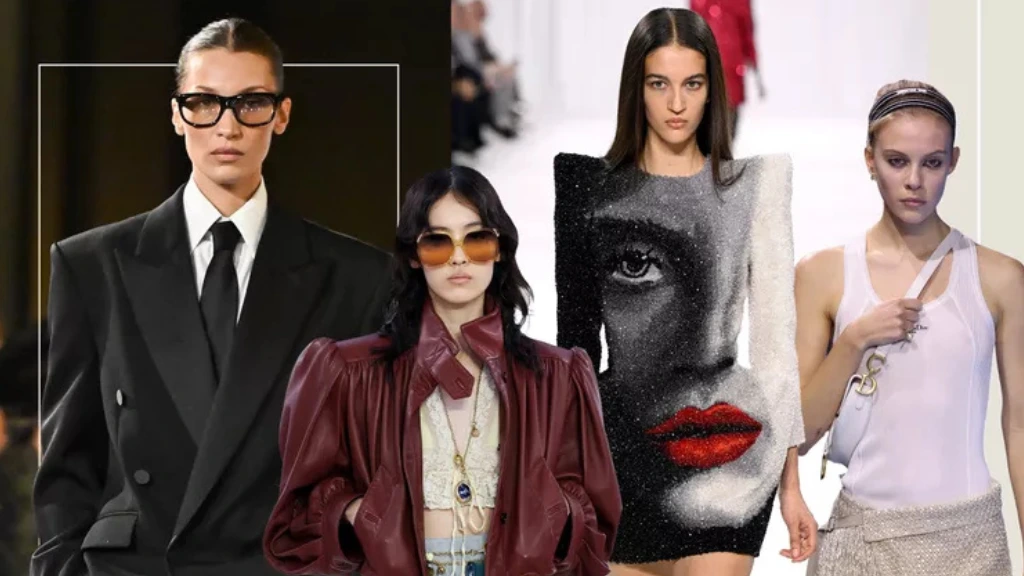In the world of high fashion, few names evoke the sense of creativity, rebellion, and sheer artistry like Alexander McQueen. Known for pushing boundaries, McQueen’s designs blended the macabre with the exquisite, the avant-garde with the timeless, and the controversial with the sublime. His work transcended traditional fashion norms, making him a globally recognized figure and leaving an indelible impact on the fashion industry.
Though Alexander McQueen tragically passed away in 2010, his legacy lives on through the eponymous fashion house, which continues to produce groundbreaking collections under the creative direction of Sarah Burton. Today, Alexander McQueen is celebrated for its bold designs, impeccable craftsmanship, and ability to fuse history, nature, and modernity in a way that speaks to fashion enthusiasts and art lovers alike.
In this blog, we will explore the life of Alexander McQueen, the influence of his designs, the lasting impact of his work on the American fashion landscape, and how the brand continues to evolve in a modern world.
You May Also Like: Burberry: The Iconic British Brand Melding Tradition and Innovation
The Early Life of a Fashion Genius
Lee Alexander McQueen was born in London in 1969, the youngest of six children. Growing up in a working-class family, his early life was far from glamorous, but he showed an interest in fashion from a young age. At just 16, McQueen left school to work as an apprentice at the prestigious Savile Row tailor shops Anderson & Sheppard and Gieves & Hawkes, where he honed his skills in tailoring. This experience instilled in McQueen a deep respect for craftsmanship and the technical aspects of fashion design.
After his time on Savile Row, McQueen worked with designer Koji Tatsuno and later Romeo Gigli, where he gained further experience in fashion design. In 1990, McQueen enrolled in Central Saint Martins College of Art and Design, where he would graduate with an MA in Fashion. His graduate collection, which was purchased in its entirety by Isabella Blow, marked the beginning of McQueen’s meteoric rise in the fashion world.
McQueen’s Design Philosophy: Beauty in Darkness
One of the hallmarks of McQueen’s work was his ability to find beauty in darkness. His collections often explored themes of death, decay, and the grotesque, but they were always executed with such precision and artistry that they became something breathtaking. His Savage Beauty collection, in particular, showcased this dichotomy, as he took inspiration from the natural world, historical references, and even tragic elements to create something entirely unique.
McQueen was never afraid to challenge the conventions of fashion. His designs often featured dramatic silhouettes, bold prints, and intricate detailing. From his notorious “bumster” pants, which lowered the waistline in women’s trousers, to his fascination with the Victorian era, McQueen constantly questioned traditional ideas of beauty and femininity. His work pushed boundaries, both aesthetically and thematically.
Perhaps one of McQueen’s greatest strengths was his ability to tell a story through his collections. Every runway show was more than just a display of garments—it was a fully realized narrative, often theatrical and sometimes controversial. From models trapped in glass boxes to holographic projections of Kate Moss, McQueen’s fashion shows were spectacles that left audiences in awe.
Alexander McQueen in the U.S.: A Lasting Influence
Though Alexander McQueen was a quintessentially British designer, his influence extended far beyond the U.K., particularly in the United States. McQueen’s avant-garde designs resonated with American celebrities, fashion editors, and consumers alike. He dressed some of the biggest names in Hollywood, including Lady Gaga, Rihanna, and Sarah Jessica Parker—women who embraced his bold, rebellious spirit.
McQueen’s presence in the U.S. fashion scene was bolstered by partnerships and celebrity endorsements, as well as a loyal fanbase that admired his unique vision. His collections were regularly featured in high-end department stores and luxury boutiques across the country, from Bergdorf Goodman in New York to Neiman Marcus in Los Angeles.
Today, the Alexander McQueen brand continues to thrive in the U.S. under the creative direction of Sarah Burton, who took the helm after McQueen’s passing. Burton’s designs maintain the intricate craftsmanship and daring aesthetics of McQueen’s original vision, while also evolving the brand to appeal to a modern audience. Her work has been well-received, particularly her creation of the Duchess of Cambridge’s wedding dress in 2011, which was praised for its elegance and attention to detail.
The Legacy of Alexander McQueen: Defining High Fashion
One of the reasons Alexander McQueen remains such a revered figure in fashion is the way he redefined what fashion could be. For McQueen, fashion was not just about clothes—it was a medium through which to express ideas, emotions, and narratives. His work blurred the lines between art, theater, and design, making him one of the most important fashion figures of the 21st century.
McQueen’s influence can be seen in the work of contemporary designers who strive to merge creativity with craftsmanship. His ability to push boundaries, embrace controversy, and take risks has inspired countless young designers who look to his career as a model for how to make an impact in the fashion world.
McQueen also leaves behind a legacy of meticulous craftsmanship. His training on Savile Row gave him an unparalleled understanding of tailoring, and this focus on the technical aspects of design is evident in every piece that bears his name. Whether it’s a structured jacket or an intricately embroidered gown, Alexander McQueen’s commitment to quality is always at the forefront.
Alexander McQueen Today: Sarah Burton’s Creative Direction
Following McQueen’s tragic death in 2010, many wondered if the brand could survive without its visionary founder. However, Sarah Burton, who had worked alongside McQueen for over a decade, proved to be more than capable of carrying on his legacy. Since taking over as creative director, Burton has honored McQueen’s vision while adding her own softer, more feminine touch.
Under Burton’s leadership, Alexander McQueen has continued to produce bold, innovative collections that stay true to the brand’s rebellious spirit. Her ability to marry the past with the present, combining McQueen’s love of history with contemporary design elements, has ensured that the brand remains relevant in today’s fashion landscape.
In recent years, Alexander McQueen has also embraced sustainability, focusing on producing collections that are not only beautiful but also mindful of their environmental impact. This includes using sustainably sourced materials, reducing waste, and creating timeless pieces that transcend seasonal trends.
Conclusion: A Fashion Legacy That Lives On
Alexander McQueen was more than just a fashion designer—he was an artist, a visionary, and a storyteller. His work pushed the boundaries of what fashion could be, blending the macabre with the beautiful, the historical with the modern, and the theatrical with the wearable. His influence on the fashion world is undeniable, and his legacy continues to inspire designers and fashion lovers around the globe.
Today, under the direction of Sarah Burton, the Alexander McQueen brand remains one of the most innovative and respected in the fashion industry. From its commitment to craftsmanship to its embrace of sustainability, Alexander McQueen is a brand that continues to evolve while staying true to its roots.
For those who appreciate fashion as an art form, Alexander McQueen will always stand out as a brand that dares to be different—a brand that reminds us that fashion is not just about clothing, but about expressing our innermost thoughts and emotions.










